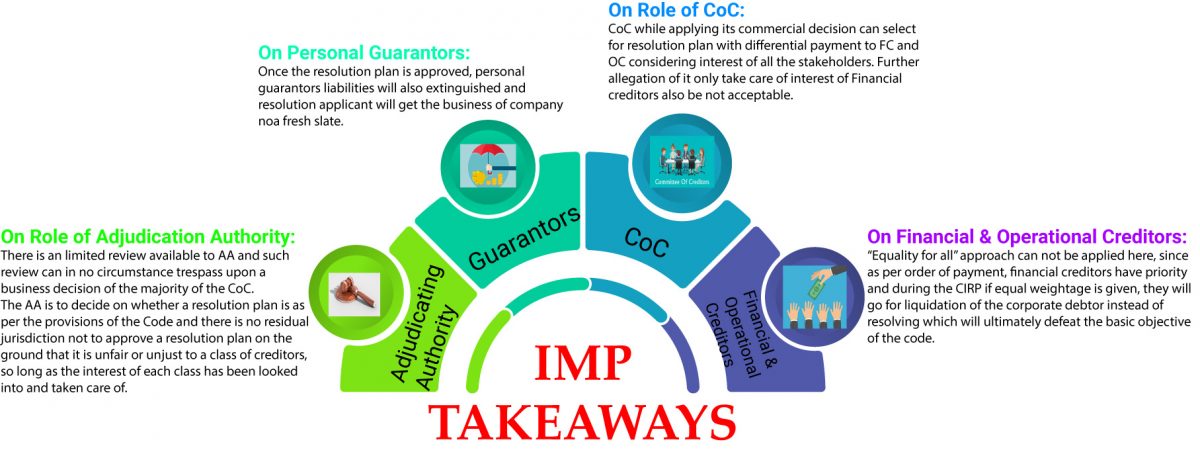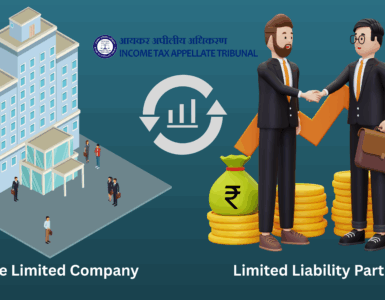After a long-drawn legal battle, the Supreme Court of India on November 15 gave the ruling that ArcelorMittal can acquire Essar Steel for Rs 42,000 crore. The apex court over-ruled the appellate tribunal NCLAT which asked the banks to share the proceeds equally with the unsecured creditors as well. The apex court’s ruling is a landmark in the short history of insolvency and bankruptcy resolution in India. The verdict has clarified on important aspects of insolvency resolution that had been interpreted variously by the National Company Law Tribunal (NCLT) and the National Company Law Appellate Tribunal (NCLAT).
Essar Steel was among the first list of the largest 12 stressed accounts that the Reserve Bank of India had drawn up in June 2017 and asked banks to refer to the NCLT and the company was formally sent to the tribunal on June 27, 2017. In fact, the Ruia family lost control of Essar in July 2017 including Essar Steel. Essar Oil was sold to a Rosneft-led group in 2017. Then last year, Essar Steel, saddled with debt, was auctioned off to ArcelorMittal. However, ArcelorMittal had to wait for taking control of Essar Steel after a judge at the National Company Law Tribunal in July upended the process by declaring that all a troubled company’s creditors — not just its banks — needed to be treated equally. Essar Steel’s debt burden has piled up as it owes around Rs 49,046 crore to the financial creditors. SBI has an exposure of Rs 13,222 crore to the company, excluding the working capital it has been extending to the company during resolution process.
[rml_read_more]
To be sure, according to the October 2018 resolution plan, secured financial creditors would recover 92% or around Rs 42,000 crore of their total exposure of Rs 49,046 crore. Following this, the Ruias-run Essar Steel Asia Holding made a counter-offer to pay the entire amount in cash to bankers. But it was rejected the NCLT in January 2019. After this on March 8, the NCLT approved ArcelorMittal’s Rs 42,000 crore bid. And on November 15, the Supreme Court had set aside the NCLAT order which gave equal rights to both secured and unsecured creditors of Essar Steel and cleared the decks for its takeover by ArcelorMittal.
We have tried to investigate the legal aspect/challenges arise during CIRP process of Essar steel under Insolvency & Bankruptcy Code, 2016.

Legal Hurdles & Judgement:
| Sr. No | NCLAT Order | Supreme Court Judgement |
| 1. | In a resolution plan, there can be no difference between a financial creditor (FC) and an operational creditor (OC) in the matter of payment of dues, both must be treated equally. (Directed FC and OC be paid 60.7% of their admitted claims) | The Code and the Regulations, read as a whole, together with the observations of expert bodies and the Supreme Court’s judgment, all lead to the conclusion that the equality principle cannot be stretched to treating unequal’s equally, as that will destroy the very objective of the Code – to resolve stressed assets. Equitable treatment is to be accorded to each creditor depending upon the class to which it belongs: secured or unsecured, financial or operational. Fair and equitable dealing of OCs rights under Regulation 38 involves the resolution plan stating as to how it has dealt with the interests of OCs, which is not the same thing as saying that they must be paid the same amount of their debt proportionately. So long as the provisions of the Code and the Regulations have been met, it is the commercial wisdom of the requisite majority of the CoC which is to negotiate and accept a resolution plan, which may involve differential payment to different classes of creditors, which may also involve differences in distribution of amounts between different classes of creditors. |
| 2. | Securities and security interest are irrelevant at the stage of resolution for payment allocation (directed that each FC (whether secured or unsecured) with a claim equal to or more than INR 10 lakhs be paid 60.7% irrespective of their security interest) | |
| 3. | OC have separate classes within themselves and can be classified into sub-classes for the purpose of distribution (while rejecting any classification amongst the FC), directed that OC with a claim of equal to or more than INR 1 crore be paid 60.268% of their admitted claims. | |
| 4. | Certain additional claims of OC (some of which were highly belated and/or without enough proof) were admitted. (Claims wroth of INR 5,058 crores (approx.) at the time of the approval of the approved resolution plan became an operational debt of approximately INR 19,719.20 crores.) | All claims must be submitted to and decided by the resolution professional so that a prospective resolution applicant knows exactly what must be paid in order that it may then take over and run the business of the CD. |
| 5. | The profits generated by the corporate debtor during the Corporate Insolvency Resolution Process (CIRP) would be distributed equally amongst the FC and OC of the corporate debtor. | Distribution of profits made during the CIRP will not go towards payment of debts of any creditor |
| 6. | A sub-committee or core committee cannot be constituted under the Code, being a foreigner thereto. The COC alone are to take all decisions by themselves. | a. The power to approve a resolution plan under section 30(4) cannot be delegated to any other body, CoC alone must take by itself. b. However, sub-committees can be appointed for the purpose of negotiating with resolution applicants, or for the purpose of performing other ministerial or administrative acts, provided such acts are ultimately approved and ratified by the CoC. |
| 7. | The COC has not been empowered to decide the manner in which the distribution is to be made between one or other creditors, as there would be a conflict of interest between financial and operational creditors, FC favouring themselves to the detriment of OC. | a. It is the commercial wisdom of the CoC to decide as to whether to rehabilitate the CD by accepting a particular resolution plan. b. The insolvency resolution is ultimately in the hands of the majority vote of the CoC. c. What is left to the majority decision of the CoC is the “feasibility and viability” of a resolution plan, which obviously takes into account all aspects of the plan, including the manner of distribution of funds among the various classes of creditors. d. CoC is empowered to decide |
| 8. | Section 53 (Order of payment) of the Code cannot be applied during the CIRP but will apply only at the stage of liquidation | Section 53 is only referred to in order that a certain minimum amount be paid to different classes of OCs and FCs |
| 9. | FC in whose favour guarantees were executed, as their total claim stands satisfied to the extent of the guarantee, cannot re-agitate such claims as against the principal borrower. | a. Section 31(1) of the Code makes it clear that once a resolution plan is approved by the CoC, it shall be binding on all stakeholders, including guarantors. This provision ensures that the successful resolution applicant starts running the business of the CD on a fresh slate as it were. b. It is difficult to accept the argument that that part of the resolution plan which states that the claims of the guarantor on account of subrogation shall be extinguished, cannot be applied to the guarantees furnished by the erstwhile directors of the CD. The judgment of the NCLAT is contrary to section 31(1) of the Code and the Supreme Court’s judgement in State Bank of India Vs. V. Ramakrishnan. |
SC comment on the resolution plan of Arcelor Mittal:
The CIRP of the Corporate debtor in the case will take place in accordance with the resolution plan of ArcelorMittal, as amended and accepted by the CoC, as it has provided for amounts to be paid to different classes of creditors by following section 30(2) and regulation 38 of the CIRP Regulations.
The NCLAT judgment which substitutes its wisdom for the commercial wisdom of the CoC and which also directs the admission of a number of claims which was done by the resolution applicant, without prejudice to its right to appeal against the aforesaid judgment, must therefore be set aside.
The appeals filed by the CoC of Essar Steel Limited and other Civil Appeals are allowed. The impugned NCLAT judgment is set aside.

Conclusion
The Honourable Supreme Court makes it amply clear that Financial creditors’ rights are different than operational creditors. The Insolvency Act is to primarily protect rights of financial creditors. CoC is supreme and it generally consists of financial creditors. Based on above, law of equality treating both Financial creditor and Operational creditor does not apply.





Add comment